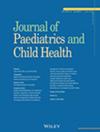Antenatal counselling at the cusp of viability and parental decision-making in the zone of parental discretion: A cohort study
Abstract
Aim
Safer Care Victoria updated a clinical guideline on extreme prematurity in 2020, reducing the threshold for offering resuscitation from 23 to 22 weeks gestation. The zone of parental discretion is the interval of shared decision-making between parents and doctors regarding resuscitation decisions. It is especially relevant at this periviable gestation. Our study aimed to establish current practices in antenatal counselling and steroid administration at this cusp of viability, and examine the decisions made during the zone of parental discretion.
Methods
Single centre retrospective cohort study. Sixteen thousand three hundred fifty-four admissions and emergency department presentations between January 2021 and July 2023 were retrieved from Birthing Outcomes System (BOS) and patient details were imported and manually reviewed on Microsoft Excel, with particular note to the gestation at admission/emergency department presentation and duration of admission. Eighty-seven patients were identified as present in the hospital between 21 + 0 and 22 + 6 weeks gestation. These 87 scanned records on Clinical Patient Folder (CPF) were then manually reviewed to identify if antenatal counselling occurred during this window. Thirty-six patients were included who received antenatal counselling between 21 + 0 and 22 + 6 weeks gestation (the remaining patients did not receive antenatal counselling during this window), and relevant data was subsequently extracted from the scanned medical record and analysed using SPSS software (IBM SPSS Statistics 29).
Results
Thirty-six women received antenatal counselling between 21 + 0 and 22 + 6 weeks. 58% decided on full resuscitation and 39% opted for comfort care if their infant was to be born between 22 + 0 and 22 + 6 weeks. All but one baby born premature were exposed to steroids, with 83.3% receiving a full course. Twenty-eight infants (62.2%) were fully steroid loaded at the time of delivery. In those fully steroid loaded, 31.1% of the time steroids were initiated prior to transfer, 50% of the time deferred until neonatal review and a decision regarding the resuscitation status of the baby, and on one occasion requested by the neonatologist before counselling.
Conclusion
Patients at risk for premature birth who attended our hospital at the cusp of viability were generally counselled about the opportunity for resuscitation between 22 + 0 and 22 + 6 weeks gestational age, and offered steroids. Further studies are required to establish whether the content of antenatal counselling, and the timing of steroids, are consistent in this population.

 求助内容:
求助内容: 应助结果提醒方式:
应助结果提醒方式:


